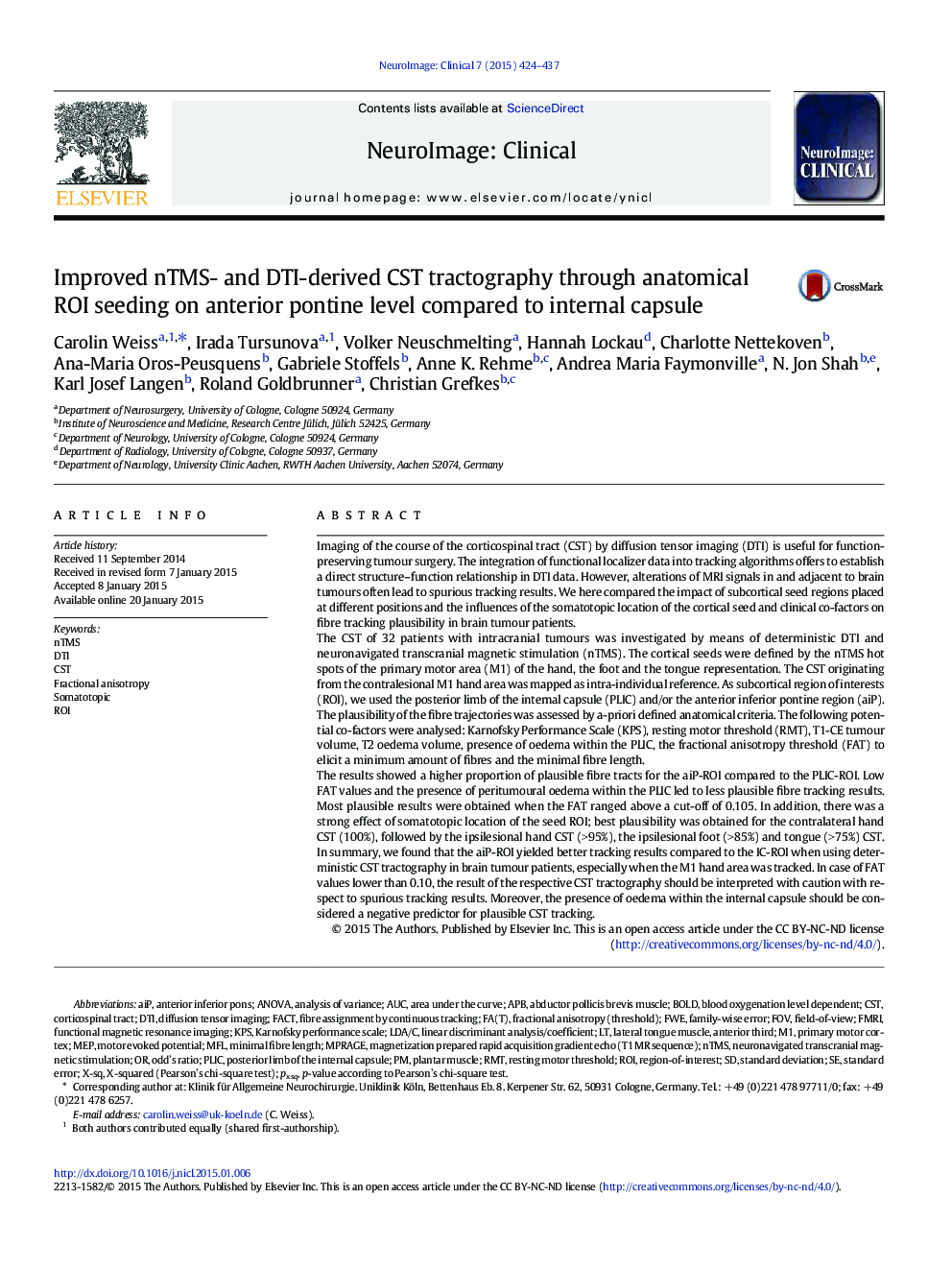| کد مقاله | کد نشریه | سال انتشار | مقاله انگلیسی | نسخه تمام متن |
|---|---|---|---|---|
| 3075096 | 1580960 | 2015 | 14 صفحه PDF | دانلود رایگان |

• Somatotopic CST tractography was done in 32 patients with eloquent brain tumours.
• Seeding ROIs were defined by navigated TMS of the M1 hot spot (hand, foot, tongue).
• Using the anterior pons as a second ROI yielded more plausible tracts than the PLIC.
• Low FAT and oedema of the internal capsule were negative predictors.
Imaging of the course of the corticospinal tract (CST) by diffusion tensor imaging (DTI) is useful for function-preserving tumour surgery. The integration of functional localizer data into tracking algorithms offers to establish a direct structure–function relationship in DTI data. However, alterations of MRI signals in and adjacent to brain tumours often lead to spurious tracking results. We here compared the impact of subcortical seed regions placed at different positions and the influences of the somatotopic location of the cortical seed and clinical co-factors on fibre tracking plausibility in brain tumour patients.The CST of 32 patients with intracranial tumours was investigated by means of deterministic DTI and neuronavigated transcranial magnetic stimulation (nTMS). The cortical seeds were defined by the nTMS hot spots of the primary motor area (M1) of the hand, the foot and the tongue representation. The CST originating from the contralesional M1 hand area was mapped as intra-individual reference. As subcortical region of interests (ROI), we used the posterior limb of the internal capsule (PLIC) and/or the anterior inferior pontine region (aiP). The plausibility of the fibre trajectories was assessed by a-priori defined anatomical criteria. The following potential co-factors were analysed: Karnofsky Performance Scale (KPS), resting motor threshold (RMT), T1-CE tumour volume, T2 oedema volume, presence of oedema within the PLIC, the fractional anisotropy threshold (FAT) to elicit a minimum amount of fibres and the minimal fibre length.The results showed a higher proportion of plausible fibre tracts for the aiP-ROI compared to the PLIC-ROI. Low FAT values and the presence of peritumoural oedema within the PLIC led to less plausible fibre tracking results. Most plausible results were obtained when the FAT ranged above a cut-off of 0.105. In addition, there was a strong effect of somatotopic location of the seed ROI; best plausibility was obtained for the contralateral hand CST (100%), followed by the ipsilesional hand CST (>95%), the ipsilesional foot (>85%) and tongue (>75%) CST. In summary, we found that the aiP-ROI yielded better tracking results compared to the IC-ROI when using deterministic CST tractography in brain tumour patients, especially when the M1 hand area was tracked. In case of FAT values lower than 0.10, the result of the respective CST tractography should be interpreted with caution with respect to spurious tracking results. Moreover, the presence of oedema within the internal capsule should be considered a negative predictor for plausible CST tracking.
Journal: NeuroImage: Clinical - Volume 7, 2015, Pages 424–437